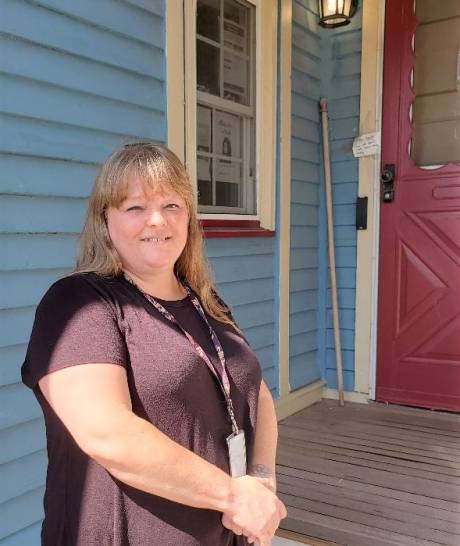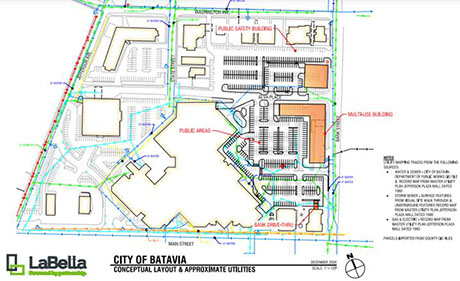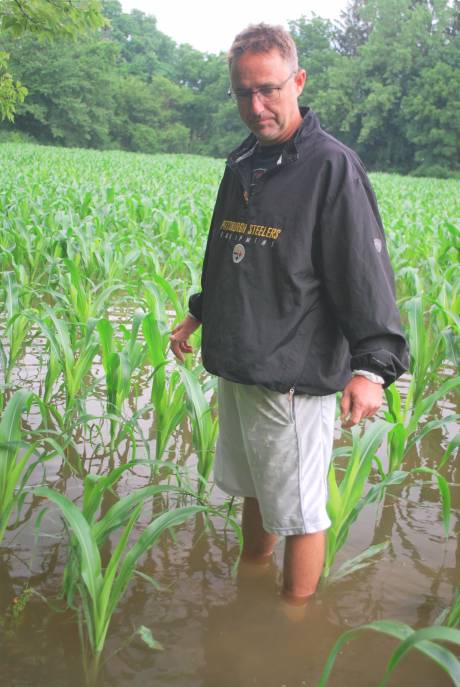When reporters for a national publication focused on justice system reform looked for a county to illuminate the changes in jail population due to pandemic-related fluctuations, they settled on Genesee County and an inmate they thought illustrated the shifting priorities of the system.
The selection of Matthew Reed to help tell the story of a person who might have been mistreated by the system drew attention locally.
Reed's name is familiar to anybody who regularly pays attention to published arrest reports.
In this case, Reed was highlighted for his conviction on a petty larceny charge -- he stole, as the story noted, $63 in bedsheets from Target. His example was perhaps colorful because his sentencing was delayed for months because of the closure of the Town of Batavia court during the pandemic. When he was eventually sentenced by Town Justice Andrew Young in May he was ordered to serve six months in the Genesee County Jail. (With good behavior, he should be out in about a month).
Reed told reporter Beth Schwartzapfel of The Marshal Project he thought the sentence under the circumstances was unfair.
Reed doesn’t understand the point of sending him to jail now, only further destabilizing his life. “They could have at least offered me drug court or some type of rehab or something,” he said in an interview from the Genesee County Jail last week.
While it's true Reed wasn't offered an opportunity for drug court or rehab, in Genesee County -- at least -- it's up to a defendant's attorney to ask the court to consider those options prior to sentencing, something Reed said his attorney didn't do even though he asked him to make that request. Reed's attorney, Michael Guarino, told The Batavian after a recent court appearance on another matter that he did make that request, and it was rejected by the DA's office.
The Marshall Project story leaves the impression that stealing some bedsheets was Reed's only crime and he was given a harsh sentence after being left in limbo for months while awaiting his sentence.
That isn't the whole story, however. In October 2020, Reed also admitted to a criminal charge of bail jumping in the third degree. He was sentenced in May on both charges.
While Young didn't give a reason for his sentence of six months for Reed, according to a recording of the proceeding obtained by The Batavian from the Town of Batavia Court, Young was made aware of the 38-year-old Batavia resident's prior criminal history, including multiple failures to appear and parole and probation revocations.
These issues came up because Reed was requesting a delay in his sentencing over concern he wanted to collect one more disability check before going to jail so he could have some money on his books. This fact isn't mentioned in the Marshall Project story.
Assistant District Attorney Kaitlynn Schmit objected to the delay out of concern Reed wouldn't make a future court appearance. She also brought to Young's attention a letter Reed had sent the court earlier asking that his case be expedited. He was distressed by the COVID-related delay in his sentencing.
While Reed's criminal history as an adult is lengthy, the prior arrests are all for relatively minor offenses, such as trespassing, harassment, and disorderly conduct. His sentences over the years have included time in jail, community service, fines and probation. His longest sentence appears to have been 365 days in 2008 on a scheme to defraud conviction.
Reached via email, Schwartzapfel said none of that -- not even the bail jumping charge included in his May sentence -- was relevant to the story she was writing.
The story's thesis is captured in the article's 28th paragraph:
The pandemic underscored what reform advocates have been saying for years: Cramped and filthy jails are the wrong place for most people who have been arrested.
In an email to The Batavian, Schwartzapfel wrote:
To answer your questions, yes of course I did a criminal history search on Reed, and I knew he had also been charged with bail jumping, which is a very scary-sounding way of saying, he missed a court date. I could have included that, as well as the list of other priors (almost all years-old petit larcenies), but it wasn't really relevant to the point, which was, he stayed out of jail during the pandemic when he would have otherwise gone to jail; and now, months later, he's serving a delayed sentence.
While ADA Schmit is on leave, The Batavian reached out to District Attorney Lawrence Friedman for background on the case and the policies of his office on cases like this. Asked about Schwartzapfel's characterization of her story, he said:
“Missed a court date” is a very nice sounding way of saying “bail jumping”.
Regardless of how old his priors are, they still factor in the determination as to what is an appropriate sentence.
Leaving out any other charge that was pending against him certainly misleads the reader about the nature of Reed's sentence, especially bail jumping.
I can’t understand the logic behind the contention that, because he hadn't been sentenced for so long, he shouldn't have been sent to jail.
AUTHOR DISCLOSURE: I first met Matthew Reed years ago while outside of our former downtown office and he asked me for money. I gave him money then and two or three times in the next couple of weeks when he asked for money, usually with some story about his disability check being late or the funds not being available to pay his rent or needing money for food. After three or four times of this, I told him I couldn't give him any more money. Eventually, he stopped asking for money, including in the past year when I would see him almost daily in the area Ellicott Street and Liberty Street.
In the story, Schwartzapfel writes:
In the Genesee County Jail in New York, where Reed recently began a six-month sentence for petit larceny, there were, for a time, only 35 people jailed, down from 90 before the pandemic, according to data compiled by the Vera Institute. Defendants had court dates pushed off, and judges went to extra lengths to allow people to wait at home rather than in jail. (New York’s bail reform law also went into effect in early 2020 and reduced jail populations even further.) By March, there were 54 people jailed in the county lockup.
The numbers and actual events in 2019 through June of this year tell a more complex story, however.
It's true that prior to the pandemic, the Genesee County Jail inmate population did hit 90, and even higher at times, but the reduction in the jail population initially had nothing to do with the pandemic and the data doesn't suggest the pandemic had much impact on the inmate population other than delaying inevitable criminal convictions.
The average number of inmates -- convicted and being held pre-sentence -- rather than "creep up" actually declined from April through June (The Marshall Project story was published in early June).
Long before any local judge had heard the term COVID-19, they were starting to obey a directive from the state court system to begin implementing bail reform. The Assembly and Senate passed the new limits on bail for criminal defendants in the summer of 2019 and even though the law wouldn't officially take effect until Jan. 1, 2020, judges and town justices were directed to take the new guidelines into consideration when deciding on bail for newly arrested defendants. Defense attorneys were well aware of this directive and were sure to remind judges of the new guidelines at every opportunity.
The Genesee County Jail population started dropping around August 2019 when there were 85 inmates in the jail. By December, that average daily count had dropped to 55. In February of 2020, when the novel coronavirus was still a distant threat, the local jail population fell to 37 and would remain at or about that level throughout the regional height of the pandemic.
In December 2020, when the total new number of COVID-19 cases in Genesee County peaked on Christmas Eve at 101, the average daily number of inmates hit its highest number since the beginning of the year, 42. As the number of new cases locally began to drop and more people were out and about, the average daily population of the jail did start to increase, hitting a total of 55 in April.
March and April were the first months in the previous 10 when more than 300 crimes were reported in Genesee County in a single month.
The drop in crime in 2020 could be a factor -- as some local officials think -- of police reluctance to interact with people unless absolutely necessary. But, perhaps, a lot of would-be criminals were equally reluctant to interact with other people, meaning fewer victims. Or with less activity in the community, there were just fewer opportunities to do something wrong. We'll never know for sure but the fact remains, the lower the number of crimes reported, the fewer people arrested, the fewer people held in jail (with or without bail reform), and the fewer people convicted of crimes.
The other factor was for much of 2020, most courts in the county were closed. That created a backlog of arraignments, plea agreements, trials, and sentencing.
"We're still pushing to sentence people convicted from more than a year ago," said Friedman. "If you think about what happened here, no courts, no grand jury for four months last year, we're playing catch up."
One tangential result of the delay in court cases, Friedman said, is it is much harder to get defendants to accept a plea. Why accept a plea, he noted, when you know the court calendar is jammed and you can put off going to jail just waiting for your case to get called before a judge?
Fewer people accepting pleas means fewer people in jail.
It's Schwartzapfel contention that she didn't intend to single out Genesee County as treating convicted criminals more harshly but to use Genesee County as an example of a national trend.
"I intended to use it as a county that was very much in step with how most other counties are handling jail populations post-pandemic," Schwartzapfel said.
This seems to indicate, then, that other counties nationally are not locking away many convicted criminals, which is counter to the narrative of the Marshall Project story, or, as the local data indicates, Genesee doesn't fit the national trend and wasn't a good example to use in the story.
The number of sentenced inmates being held in the Genesee County Jail dropped precipitously in 2020 and has remained relatively low. The highest average daily count of sentenced inmates in the Genesee County Jail in 2021 peaked at 11 in March, not even half of the lowest numbers of 2019.
The delays in sentencing have been the largest contributing factor to the drop in total inmate count locally (Schwartzapfel leaned on total population counts, not the different segments of pre-sentenced and sentenced inmates), so contrary to the impression left by the Marshall Project Story, Genesee County is not rushing to lock up new convicts.
But this isn't the doing of judges, as the Marshall Project Story states, it's the response of defendants that are leading to delayed jail sentences, Friedman said.
"Because of what has happened and we're still very slow in courts, people don't have the same incentive to accept a plea offer," Friedman said. "They think, 'let things go. Time is on my side."
Meanwhile, if your concern is bail reform, something Schwartzapfel said was not a focus of her story but does matter if your goal is to reduce the number of people held in jails, the local crime data offers little assistance to either side of the debate.
Crime dropped dramatically in 2020, the first full year of bail reform, but that almost certainly has more to do with the pandemic than anything else and the pandemic may have masked bail reform's full effect on crime. On the other hand, crime rates in four of the first six months of 2021 exceed the rate of 2019 but dropped below both 2019 and 2020 in June. So it's a mixed bag with too little data -- and the available data is tainted by other factors -- to lead to any meaningful conclusions.
The headline-grabbing unintended consequence of bail reform is anecdotal, not statistical, such as the repeated arrests of Devon Wright and the frustration of County Court Judge Charles Zambito at his inability to hold him, legally, in jail.
One clear result of bail reform, Friedman said, is, again, people are less likely to accept a plea offer.
"If I'm out on the street, why should I go in and plead guilty and go to jail," Friedman said. "When people are already in jail, they're more likely to say, 'Let's get this done.'"
The other downside of bail reform, according to Kevin Finnell, Friedman's first assistant, is that when defendants don't show up for court, judges can't issue warrants like they used to. They first have to reschedule the hearing and give the defendant up to another month to appear.
Since judges started implementing bail reform, the number of people held in jail before sentencing has been cut roughly in half, if not less. There are still 30 to 40 people a month held in jail who have yet to be convicted of the crime that led to their confinement. Bail reform isn't benefiting as many defendants as the public seems to believe.
Friedman has a sense that there are at least some defendants who, because of bail reform, have used the opportunity to re-offend, and that concerns him.
"Anecdotally, we all know of cases involving people who have been on the street who wouldn't have been otherwise and they continue to commit criminal offenses," Friedman said. "I can’t give you statistics or how many would have been locked up before bail reform. But I don't think you can say, 'Well, people who have been released, they're not committing crimes anymore because obviously, that's not the case."












